By: Anthony Spaeth
Tiangai Temple sits atop Mengding Mountain in Sichuan. It honors Wu Lizhen, the first person to plant tea for cultivation, which he did on this spot in 53 BC At an elevation of 1,450 meters and with four surrounding peaks, it’s an appropriately dramatic setting for a defining moment in human civilization. With the first harvest, one can imagine the horns and timpani of “Thus Spake Zarathustra” and the appearance of a black monolith.
Some 2,023 years on, the greatest tribute to Wu Lizhen is the fact that all of Mengding Mountain and much of the surrounding region are carpeted in tea bushes. There are other tangible monuments, as I discovered on a recent visit, including – why not? – a giant teapot.
I live in Hong Kong but rarely explore mainland China. The only genuinely adventurous assignment I ever had there was to Ruili, the rambunctious town of gamblers, jade merchants, hookers, drug addicts, and HIV victims on the Burmese border, and that was 26 years ago. China had no high-speed trains then.
Since they first started rolling in 2007, China has built the longest high-speed network in the world. I want to use it to go somewhere far: Chengdu, the capital of Sichuan Province. What I am exploring is China itself, to see how far decades of rapid development have brought it into the modern world. I wonder how welcoming China is to a visitor, how easy it is to navigate, how prosperous it has become, and – no offense intended – how normal. From the Hong Kong perspective.
West Kowloon Station is the Hong Kong terminus of China’s high-speed train system. Although it opened in 2018, it isn’t seamlessly connected to the local transport system, requiring a hike from nearby subway stations or bus stops, a metaphor for the disconnect between semi-autonomous Hong Kong and the rest of China. It’s an impressive structure, with an interior like a spaceship’s. Part of it is not Hong Kong at all: the Mainland Port Area was ceded to Beijing for a token yearly rent. In other words, you enter mainland China before you board the train.
From tiny Hong Kong, that self-contained and prosperous pimple on China’s rump, traveling to Sichuan seems less a tourist’s schlep than an odyssey: 1,650 kilometers (1,025 miles), eight hours and 17 minutes on a train that can hit 300 kilometers per hour. As it turns out, it’s an easy odyssey. The cars are full because it’s National Day Golden Week, and although Second Class looks unruly – giant suitcases jammed behind seats, legs protruding arrogantly into the aisle even before departure – First Class is civilized. (Even more so Business Class, the most expensive seats.) No goats or chickens, just a lot of screens, earbuds and headphones, solid middle class leisurewear and chattering, well-behaved kids.
The argument for train over air travel is that you see something of the country. On this route, we pass the dramatically sculptured limestone peaks of Guilin, ink paintings come to life, which poets have instructed us to savor on slow boat trips on the Li River. We whiz by in minutes. What you notice most in today’s China is the infrastructure built or under construction: new highways, tunnels galore, mighty bridges between mountains, train lines on spindly, aqueduct-like supports that make you gasp and cross your fingers.
There’s a historical poignance to entering Sichuan by a lightning-fast train. For most of China’s past, the province was isolated and almost sublimely so. “It has lived behind its forbidding mountain barriers as a law unto itself throughout Chinese history,” wrote Theodore H. White and Annalee Jacoby in Thunder Out of China in 1946. Sichuan’s nicknames – Land of Abundance, The Heavenly Land – refer to its wealth of resources, particularly agricultural. In the past, it was said Sichuan could feed three or four other provinces and solve any food shortage in China if better means of transportation existed.
But they didn’t. “[Pack] Animals are rare,” wrote American academic George B. Cressey in 1934’s influential study China’s Geographic Foundations, “carts unknown, railroads but dreams, canals impossible, and the rivers too swift.” Abundance was no protection against misrule: under warlords in the mid-1930s, a famine killed millions in fecund Sichuan, followed by a worse one caused by Mao Zedong’s Great Leap Forward in the 1950s and 1960s.
Mao’s successors abandoned voodoo economics, knit together their vast country with roads, rails, and airports, and identified key strengths for each region. For Sichuan, they focused on a unique native species, the Giant Panda. Wherever your eye alights in Chengdu, it finds a representation of a panda: in cartoon images, gazillions of plush dolls, on the heads of less-than-self-aware tourists wearing headbands, giant models hanging off skyscrapers, or projected onto them at night in lighting effects. There’s plenty to see and do in Chengdu, China’s fourth most populous city, including a fiery cuisine to be explored at one’s gastrointestinal peril. But the overwhelmingly main draw for tourists is the adorable pandas.
Chengdu’s East Railway Station is far huger than I expected. The swollen river of holiday tourists dims the likelihood of engaging a taxi. But the hordes head into the Metro. With a trickle of others, I continue on to the taxi stand—to find more waiting taxis than I’ve ever seen anywhere in my life.
I am obviously unprepared for modern Chengdu.
We drive through a redwood forest of apartment towers, if redwoods can be imagined as newly grown. From my balcony in the Mao-era Jinjiang Hotel, it seems like mine is the only building in the city center that isn’t spanking new, at least at night. In the morning, I spot a few more, but only a few.
Over the next week, I explore Chengdu’s old neighborhoods, some tarted up for tourists, others run-down. I take morning walks along the Nanhe River, where groups of people do qigong exercises with agile arms, fans and even swords, as they may have forever. What really stands out in Chengdu are the manicured boulevards with their shiny cars, many of them quietly electric, and the seemingly eternal march of new office towers or civic buildings with arresting architecture. The only touch of chaos comes at crosswalks, which are shared by pedestrians, bikes and motorbikes with no apparent rules of engagement.
Lookwise, modern Chengdu resembles the Gangnam section of Seoul, although Seoul had only one direction to expand—south—because of the border with North Korea. Chengdu has expanded in every direction.
The Metro is only 15 years old. I’m stunned at its resemblance to Hong Kong’s MTR. When changing lines, I forget I’m away from home. The subway’s cars are almost identical except for the straps, which are fashioned to look like panda heads.
The passengers wouldn’t be easily mistaken for Hong Kongers with their dolorous-in-repose Western Chinese faces, leathery skin, center parts on women and men who seem to have been born with crewcuts and trainers. People who can’t find a seat squat in place, which you won’t see in Hong Kong. There are greater levels of security: before descending to the train, you must pass through a metal detector and have your bag scanned. As you swipe your ticket, your face is scanned, as it will be when you swipe out.
The other thing I notice about the Metro is that it’s not particularly crowded. I’m usually the only person in the passageway leading to the exit near my hotel. Some 6 million trips are made every day by a population of 21.4 million. That’s not much more than the MTR’s 5.5 million trips per weekday, and Hong Kong’s population is only 7.5 million.
After a few days, I think I have figured this out. Like everything else in Chengdu, the Metro has been built for growth.
Isolated Sichuan “has never been a center of conquering power,” wrote British Sinologist C.P. Fitzgerald in 1969, “perhaps because its people were too well off at home to wish to go elsewhere.” They traced their origin to the ancient Kingdom of Shu, which was acknowledged in Chinese historical records but only vaguely.
That historical fog started to clear in 1927, when a farmer dredging an irrigation ditch outside Chengdu stumbled upon jade artifacts. In 1986, a sacrificial burial pit containing thousands of gold, bronze, and jade items was accidentally found, and a month later, a second pit nearby. It was a historical archeological discovery: a Bronze Age civilization to rival ancient Egypt and the Indus Valley.
The Shu civilization won’t be overlooked again: a museum has been built in Guanghan, near the Sanxingdui archeological site, an hour from Chengdu. It’s been designed on a huge scale to take advantage of the panda tourism boom. The highway from Chengdu looks new and has sparse traffic beyond tour buses. A sign posted by Guanghan County describes the museum as “an important part of Sichuan Province’s tourism brand.”
To a traveler like me, it’s a sober reminder of the many components of Chinese culture, including an entire civilization lost to history for 13,000 years—and only stumbled upon in our lifetimes. This includes Hong Kong, of course, which was in British hands for only 155 years—blink!
I discovered that people in western China aren’t shy, nor are they wary of foreigners. One of my cab drivers doesn’t even recognize the concept. He’s eager to converse and totally puzzled as to why I don’t understand him. A hurt silence reigns until he slams his horn at a woman crossing against the light and hurls insults out the window. When I chuckle, he treats me to some follow-up abuse, but does seem resigned to my not responding verbally.
An older cabbie is savvier but unpleased with the communications hassle I represent. He looks at me sideways—I’m in the front passenger seat—points at his nose and says in a thick accent, “I China!” I don’t get it, so he repeats himself. “I China! I China!”
Back at the hotel, the elevator makes announcements in Mandarin and English: “Second floor…The door is closing…Sorry to keep you waiting.” A married couple greets me with “Ni haos.” I reciprocate. The husband wants to engage more, but his English fails him. He ends up repeating the English elevator announcements. “Third floor…Sorry to keep you waiting...”
On another morning, a mother enjoys a post-breakfast fart in the elevator. Her pubescent son objects, on my behalf, I suspect. She laughs mischievously.
Chengdu was very important to Du Fu, one of China’s two most revered poets, along with his Tang Dynasty contemporary and friend Li Po. After bitter career disappointment, family tragedy, and bad health during the violent demise of the Tang, Du spent his happiest years in a thatched hut on a creek in Chengdu from the age of 47 to 52. The hut is a tourist attraction. I expect to find truculent youngsters dragged along by parents who don’t remember the special hell of memorizing Du’s poems as centuries of Chinese students have had to do.
What I don’t expect is a giant, lush theme park dedicated to the varied glories of the Chinese past: nature, art, ascetic isolation and stupendous grandeur, with a dose of superstition—kids compete to touch the beard on a bronze bust of Du. A Disneyland comparison comes to mind, if Walt Disney could ever have thought of basing his monument to Americana on a single artist, a poet no less.
Du Fu has been turned into an embodiment of all the best elements of Chinese civilization. Much is made of a mighty wind that blew down his thatched hut—a symbolic stand-in for the real cataclysm of Du’s life, the crumbling of China’s Golden Age, the Tang Dynasty. The main idea is that everything this man stood for has lasted more than a millennium. It’s basically indestructible—China is indestructible. Every succeeding dynasty understood the symbolic power of Du’s hut and maintained and expanded it, as did the Communist Party. Mao Zedong visited in 1958 and praised the “political nature” of Du’s poems.
After pandas, the second most common sight in today’s Chengdu is the flag of the People’s Republic. A pair fly from every street lamp in Chengdu, so no matter what you spot from a car or a bus or just walking around—that impressive structure, this overpass, that park—a red Chinese flag is included in the frame, often directly superimposed like an imprimatur.
The presence of the government is felt in many ways. Facial recognition is used not only on the subway but on ordinary trains, buses and entrances to museums. When you buy a ticket in China, it’s not just proof of payment. A recognized ID must be used—for foreigners, usually a passport—and if there’s any fumble in the inputting of the details, you won’t be allowed onto a train or out of a station until they are straightened out. Your name is on the ticket: your movements are being tracked.
Then there’s the Great Firewall, China’s control over what you see on the internet. Foreign visitors often use virtual private networks (VPNs) to access websites blocked by Beijing like Google, Facebook, X, and Western news outlets. But even with a VPN, everything on your computer or phone slows down. At first, I wondered if 4G connections were the problem, but I didn’t remember lags when we were all on 4G a few years ago—and they persist when I’m on WiFi. The Notes on my Apple devices won’t sync. Pastes from one Apple device to another, right next to each other, take an agonizing minute. This gives me plenty of time to drum fingers on a desk and imagine what’s going on. I picture a slack-jawed apparatchik wearing a Great Firewall jumpsuit in a windowless data center staring at my Google searches — “Is the Chengdu Shu Brocade and Embroidery Museum worth going to?” “Who invented brocade?” “What is brocade?”—and taking way too long to let them through because he’s texting his girlfriend.
The paradox is that smartphones and the Internet have made it possible to get around China easily and without an interpreter. The Great Firewall undoes that triumph of technology. Whenever I felt lost, desperate for help, rebuffed by an unhelpful ticket counter clerk or obdurate taxi driver, I was usually staring at my phone and wondering why it wasn’t offering a solution.
I had that feeling in the city of Ya’an as I tried to find my way to Mengding Mountain. I travelled to Ya’an in a six-seat tourist van. Before we could leave Chengdu’s Xinnanmen Bus Station, an inspection was required. I figured it was for IDs. Nope: an official with a cruel face and unforgiving manner had to check whether we were wearing our seatbelts. The guy next to me had settled in without the strap across his shoulder. He was commanded to make it right. An old man was found to be unsafely secured. The official rebuckled him, but roughly. The old man squawked. The official resented being upbraided. Recriminations flew, anguished interjections came from the old wife, everything escalated until the official took a quick snapshot of the inside of the van and brutally slammed the van’s door shut. It was a micro-demonstration of modern China’s desire for order, control and safety, overly harsh enforcement and occasional rebellion. (Five minutes later, the guy next to me wriggled out of his shoulder strap.)
Chengdu claims to be the birthplace of paper money. The iron coins of the Song Dynasty were heavy, so merchants started using promissory notes in the 11th century. But in today’s China, cash is an overthrown king: almost everything is paid for electronically by Alipay or WeChat. Some merchants won’t take cash at all. I heard that beggars flash QR codes for electronic alms but couldn’t confirm it: I didn’t see a single beggar.
When cash does change hands, I found, everyone is scrupulous about giving the correct change. Offers of tips to cabbies are accepted very nervously, as if they think they’re doing something wrong and might get caught. I get used to China’s rock bottom prices with obscene speed: any taxi ride over 15 yuan ($2.10) makes me bristle over possible cheating. (That’s around half the flagfall in Hong Kong.)
In fact, no one tries to rip me off, take advantage of me, or take me to some place I hadn’t intended. Not once do I feel avoided or intentionally ignored, as happens in Japan and Korea. Only twice am I singled out as a foreigner. A male on a subway escalator greets me with a hearty “Ni hao!” While waiting for the cable car on Mengding Mountain, a brassy middle-aged female says, “Hello I love you,” and demands a pic be taken together.
In other words, I find Chengdu orderly, welcoming, confident and—this may surprise Hong Kong friends— clean. Perhaps a little enlightened too. The city is considered gay friendly and word has gotten out. On a street-food tour I take on my first night, half the participants, foreigners all, are gay.
High-speed trains run on both long-haul and short routes. I return to Chengdu from Ya’an on one that has but three stops. Shorter routes come into a different station and have cars designed to be more commuter-friendly. Everything is so new, so spotless, serenely orderly, and the passengers are so blase that I feel like I’m in Japan.
When Britain returned Hong Kong to China in 1997, the oft-stated fear was that it would be degraded into just another “dirty Chinese city.” At the time, we never considered the reverse possibility: that China would build up more Hong Kongs.
Finally, the pandas.
The Chengdu Research Base of Giant Panda Breeding, despite its wonky name, is a kind of a panda Disneyland set in an actual countryside. If you think of Third World theme parks as exercises in delusion—chicken-wire-and-plaster statuary and death wish rides—the Chengdu base will cure you of that notion. It’s a world-class tourist destination in conception, execution, and design that combines panda viewing with walks in a lush, exotic Sichuan mountain park—and it’s easily reached by Metro and a shuttle bus. The newer West Gate entrance has particularly wide staircases and visitor ramps, clearly designed for heavy volumes of visitors in the future.
Arriving early is advised because pandas sleep in the afternoon. As in any zoo, you pity the animals, especially the ones behind glass in pavilions. It’s less obvious how to feel about the pandas in outdoor, custom-built habitats that visitors peer into from elevated walkways. They have it pretty good. It’s their native land and climate. They’re eating the bamboo they’re made to eat. Some pandas were actually born abroad and repatriated, part of the loan agreement with foreign zoos for their parents. Now they spend their days climbing their native trees to curl up into a fork of branches, or gamboling on treehouses constructed by their human captors. Everything is spruced up and made as nice as possible.
All they lack, really, is freedom.

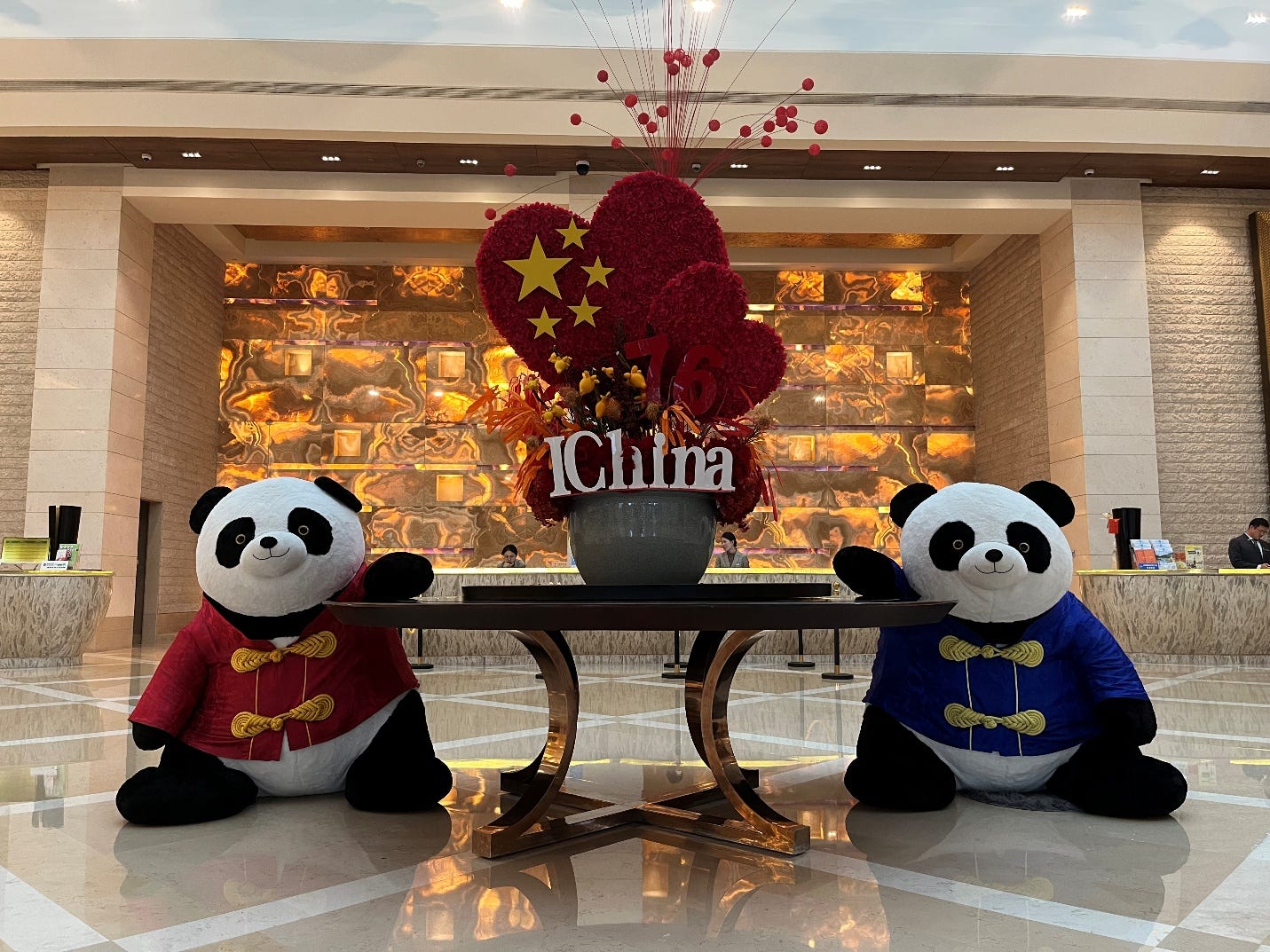
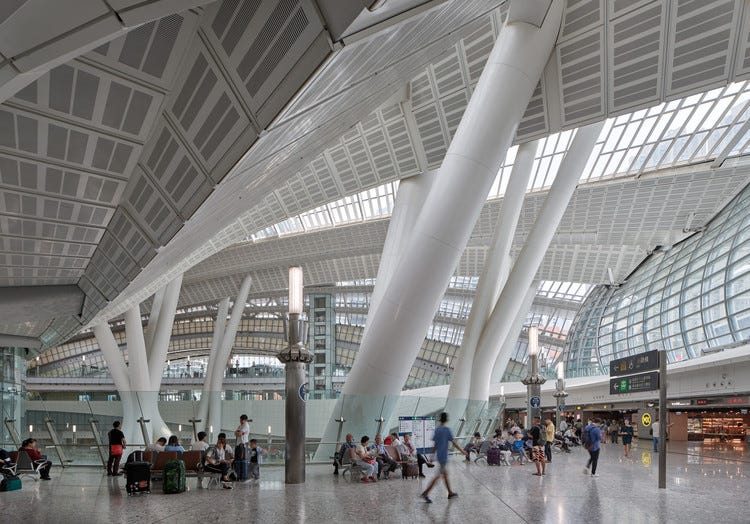
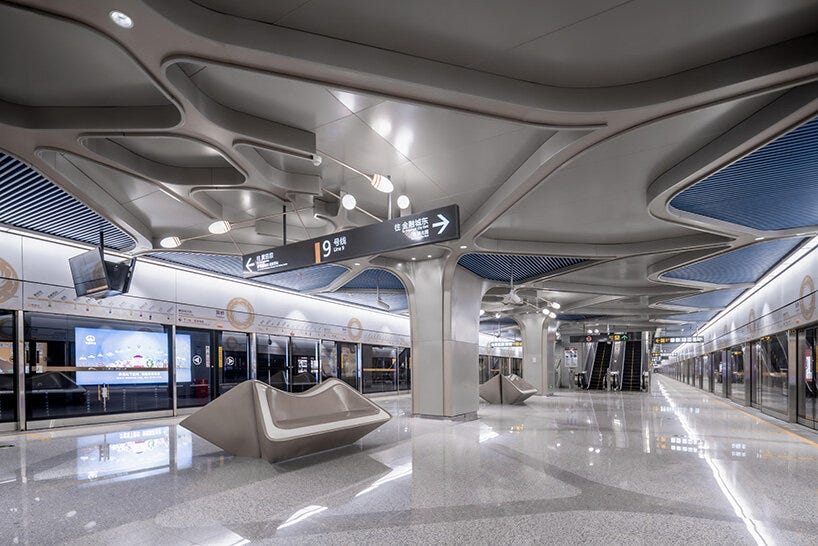
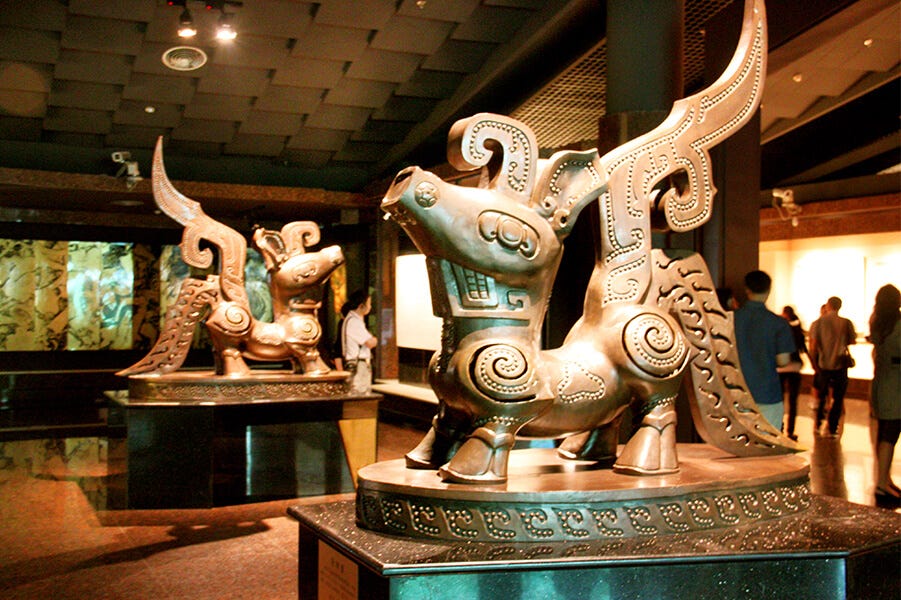
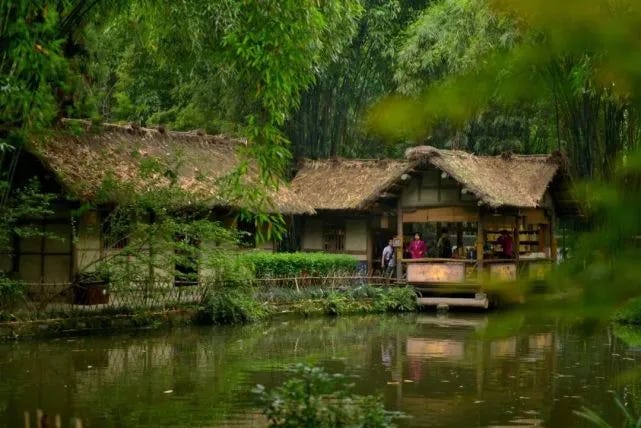
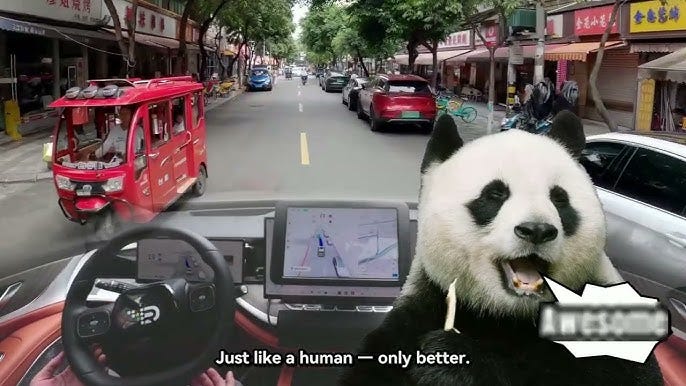
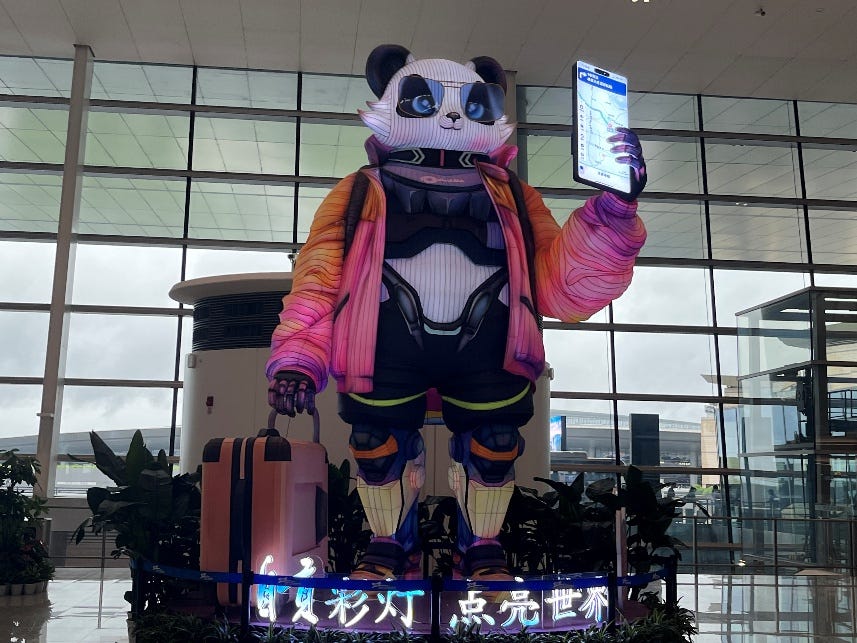
Great read about a journey I’ve always wanted to take